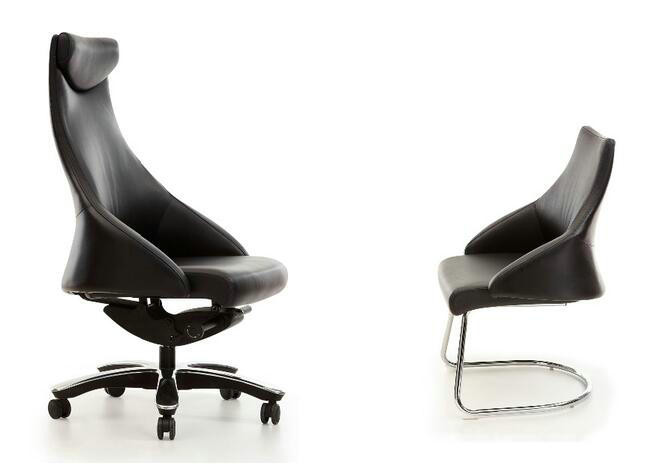
Many office workers spend thousands of hours sitting in an computer office chair at their desk, so there is a great deal of opportunity for their sitting posture to either continuously help the back or hurt it.
The following four points are important to help support the back, neck, and shoulders when setting up an office chair and computer (See Figure 2 for an illustration):
Office chair back support. The back of the office chair provides important postural support, so it should be adjusted to fit the individual user. When necessary, an extra low back support should be added so that the back rests comfortably against the office chair when working on the computer. Having the right back support in the office chair supports the natural curve of the low back so that the back muscles do not have to work so hard to maintain correct posture. Without proper back support, over time the muscles fatigue and the natural tendency is to slouch forward, straining the structures in the low back.
Keyboard in easy reach. The computer keyboard should be positioned close enough to the body so that it is not necessary to lean forward to reach it. Both elbows should be at the sides of the body when sitting in the office chair and typing on the computer, not reaching out in front of the body.
Computer screen at eye level. The top of the computer screen should be placed so that it is at eye level. If the screen is too low it will be necessary to bend forward to look at it. Since this cannot be done with a laptop (because the screen and keyboard are connected), the laptop should be boosted up (e.g. placed on a few books) so that the laptop screen is at eye level, with an external keyboard plugged in and placed within easy reach. Extra keyboards are inexpensive and can be put at the proper height so that the elbows are bent to 90 degrees while working. Conversely, some may prefer to use their laptop keyboard, and if this is the case the same objective can be accomplished by leaving the laptop keyboard on the desk and plugging the laptop into a separate computer screen that is placed at eye level.
Arm support. The arm supports on an office chair should allow the elbows to rest comfortably at 90 degrees along the sides of the body while working at the computer. Arm supports that are non-existent, too low, or too wide for an individual user make the shoulders hunch forward, eventually dragging the neck and spine forward with it.
To have all of the above factors does not necessarily require an expensive office chair, desk, or computer accessories. For example, the computer screen can be placed on one or two books to make sure it sits at eye level, and a rolled up towel or small pillow can be used to provide additional low back support if the office chair does not provide the right low back support. Paying attention to the ergonomic set up is the most important factor.



